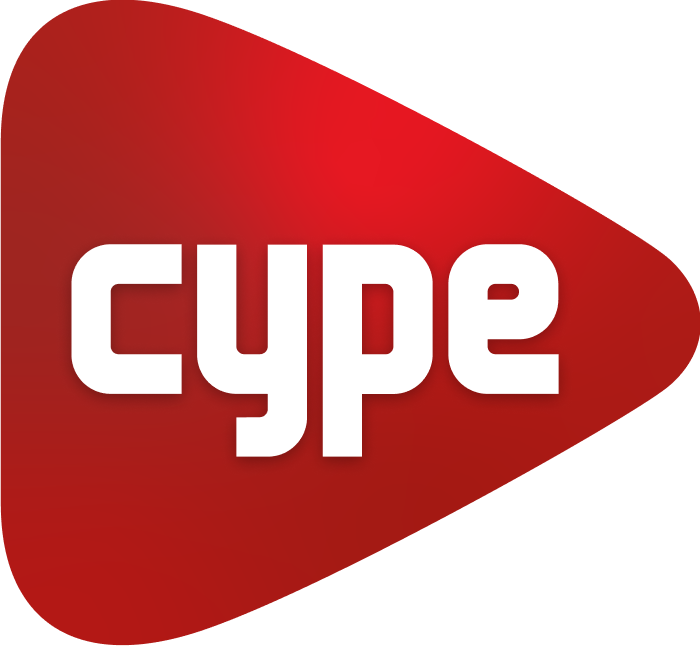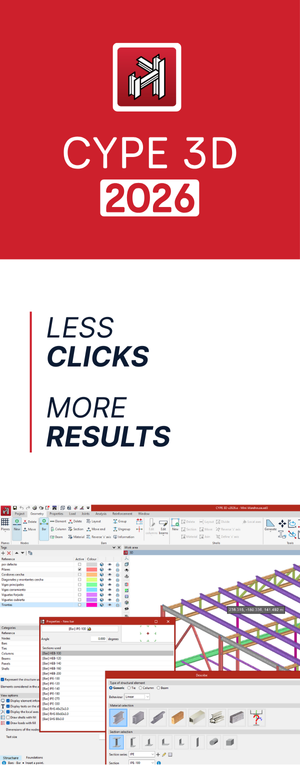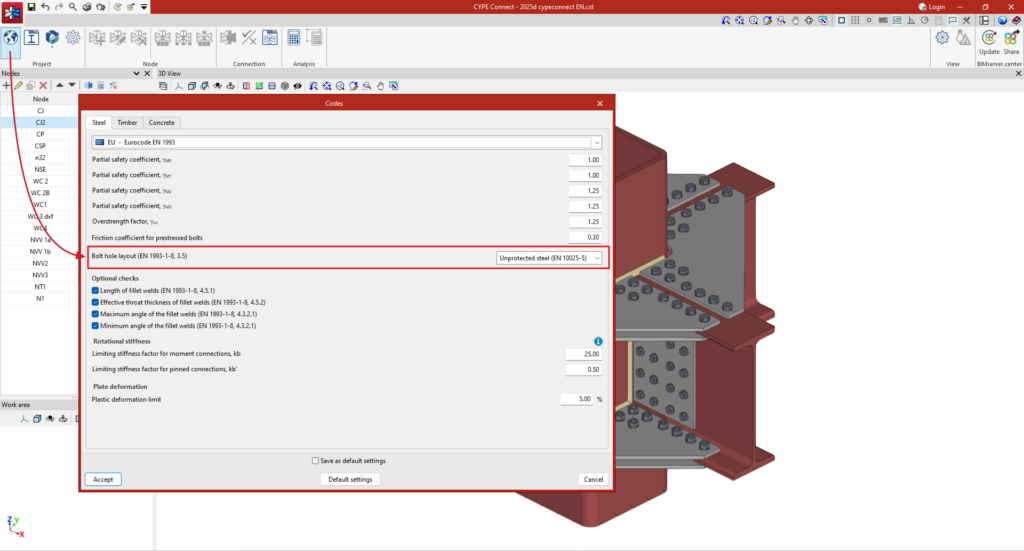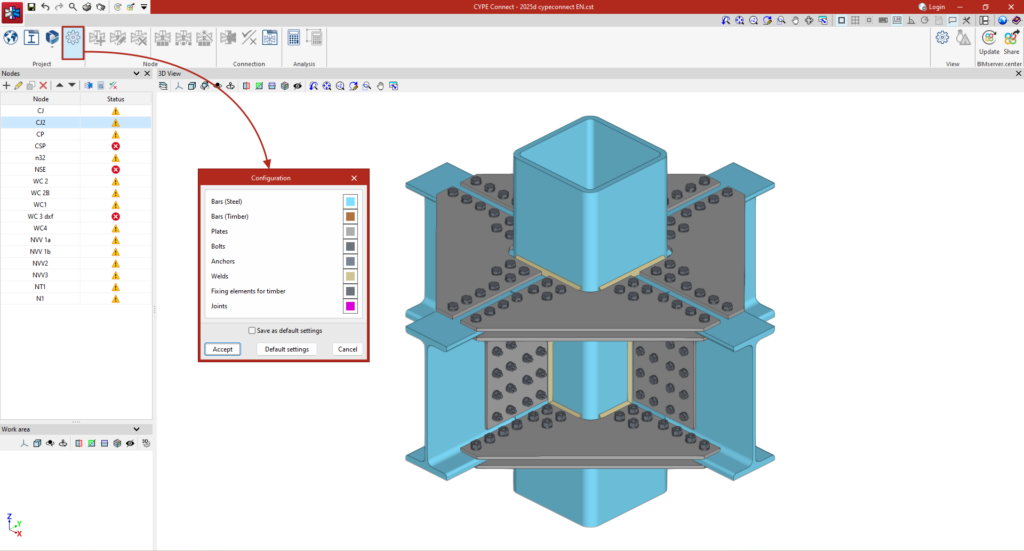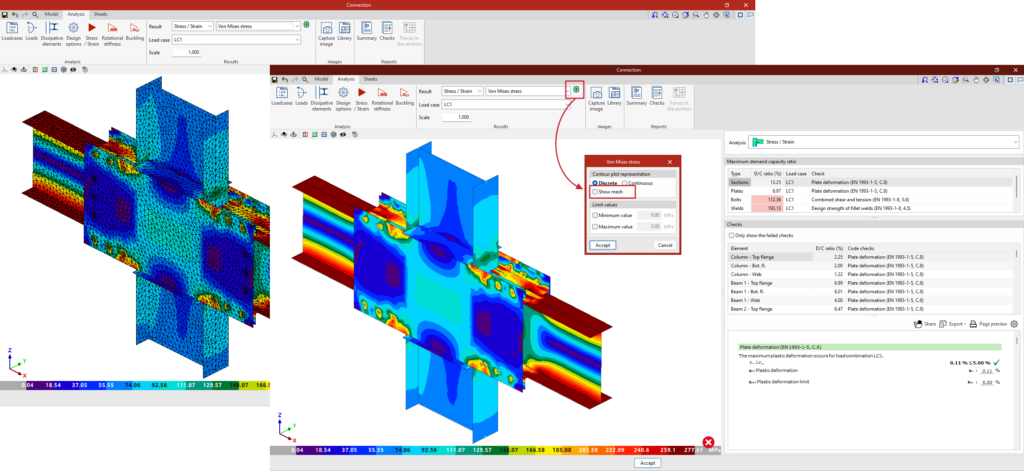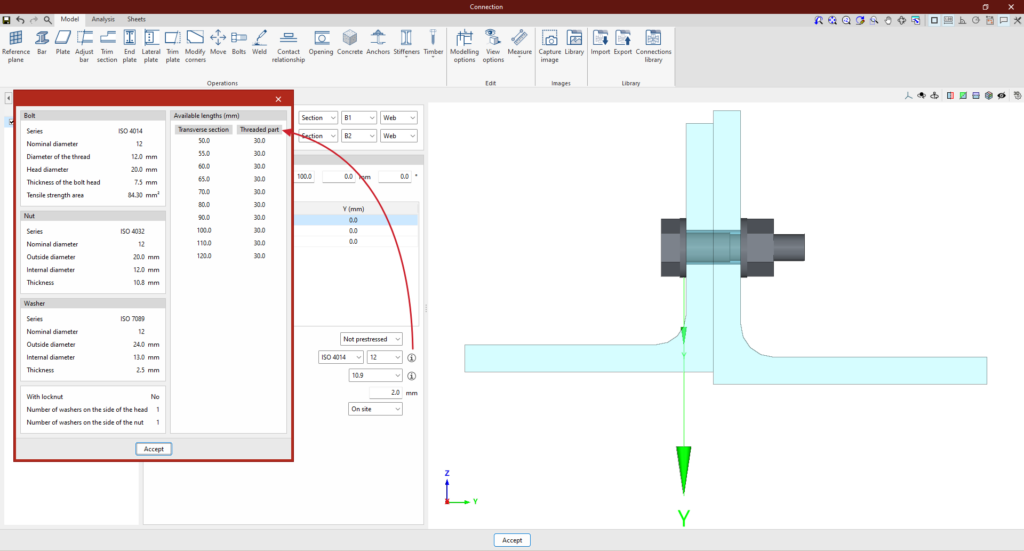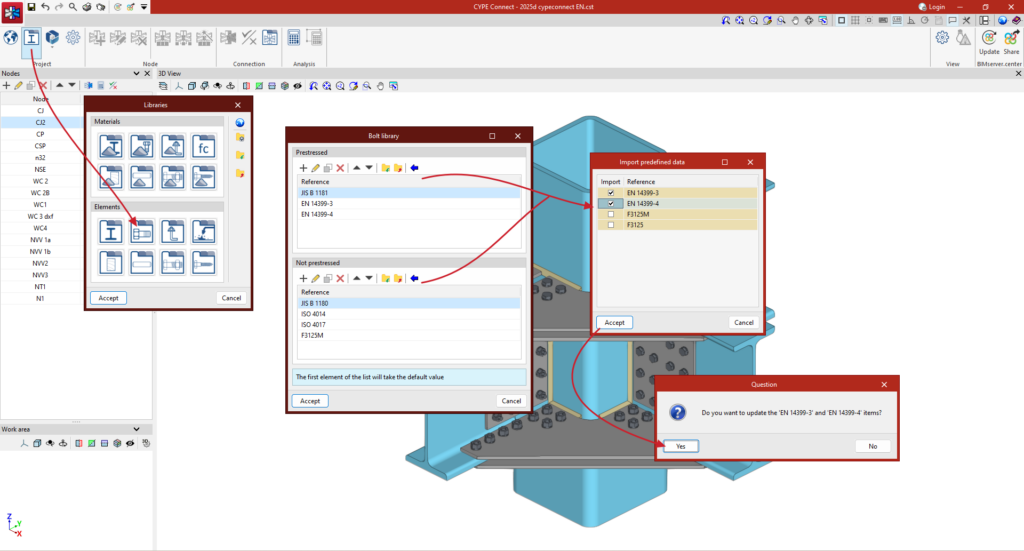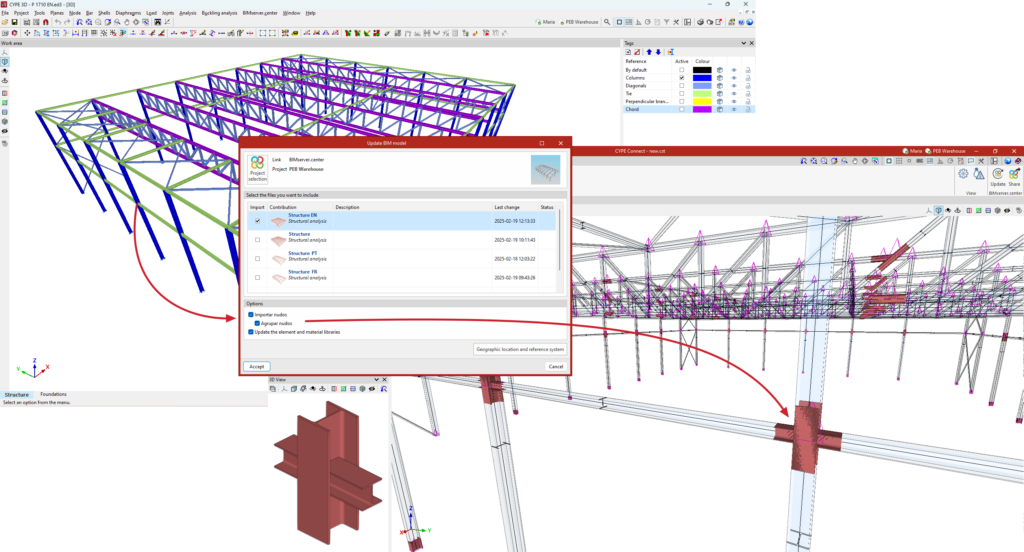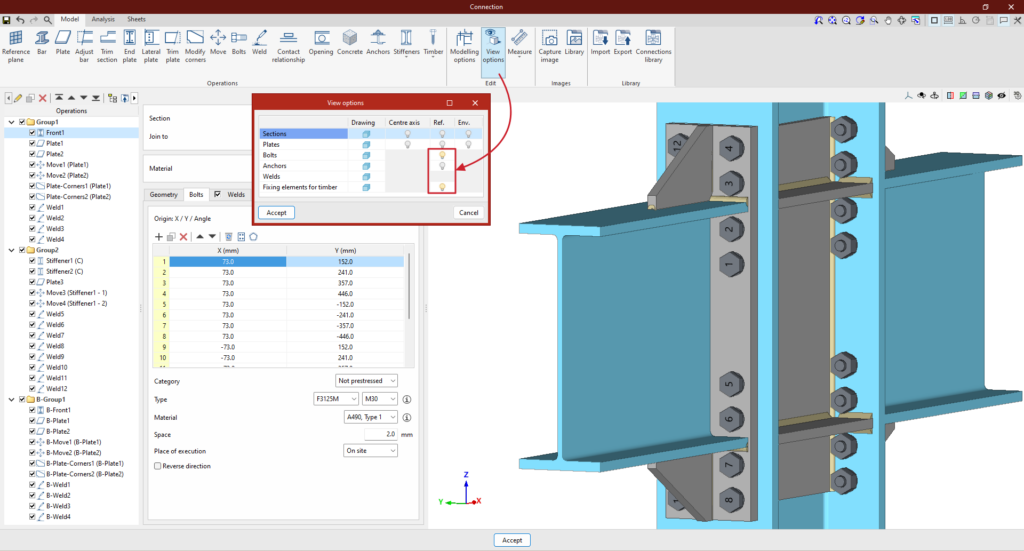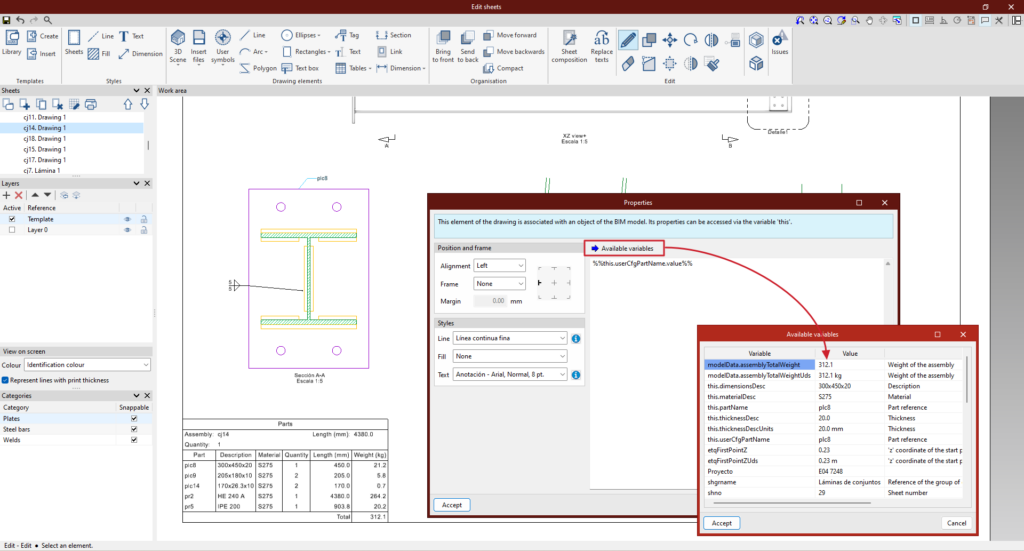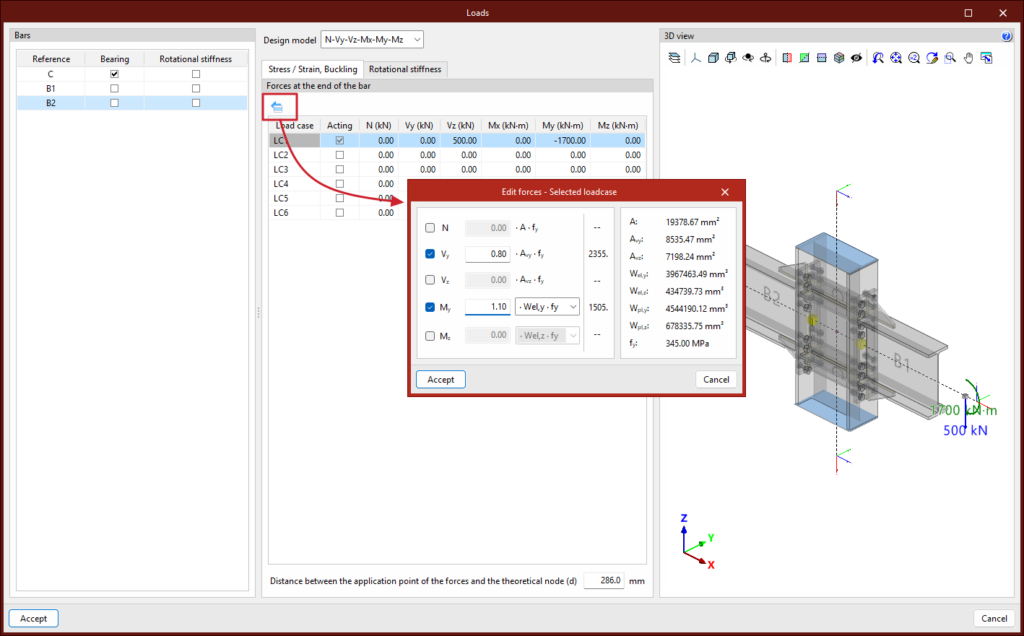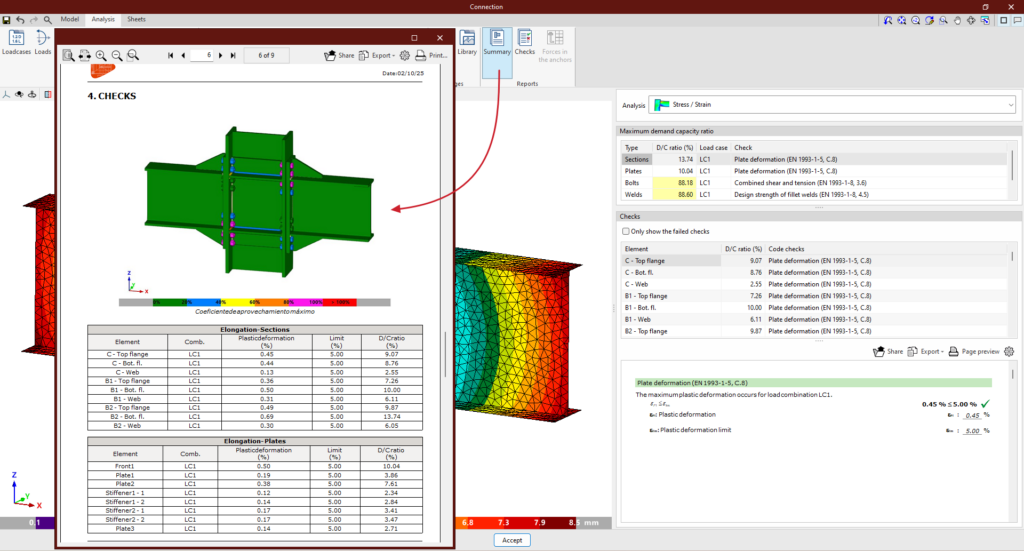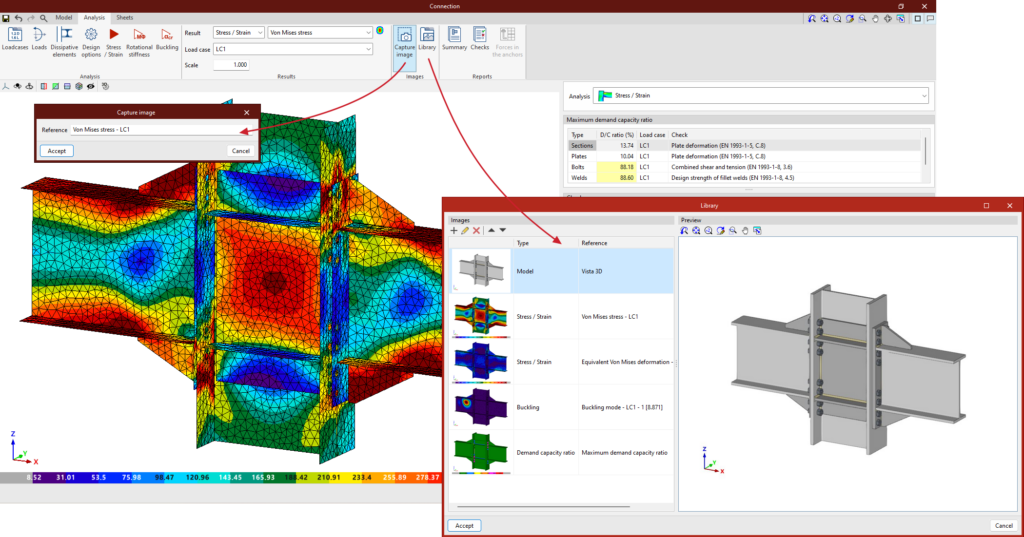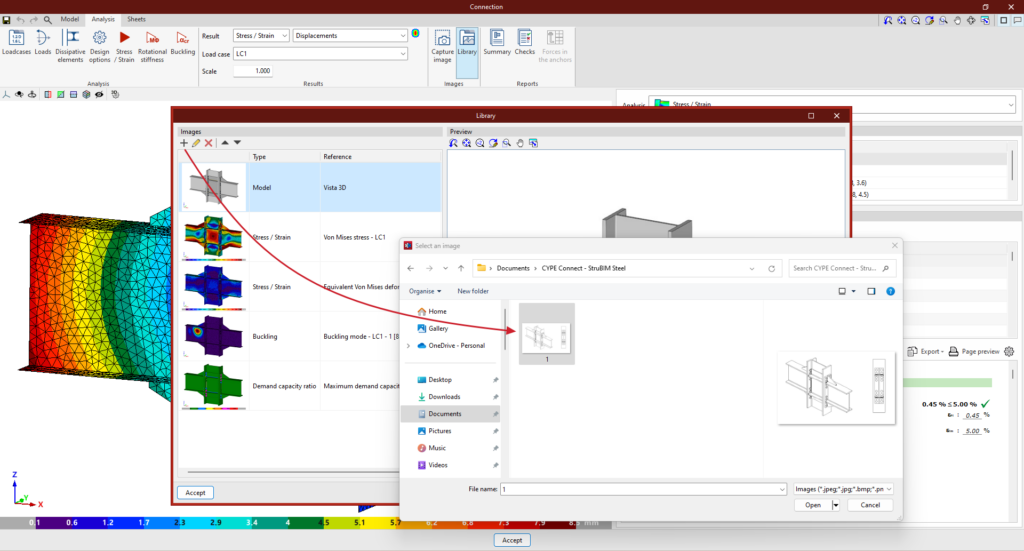Update history
StruBIM Steel
Selecting the type of steel for bolt layout checks
- Published on
- 2025.d
Deactivating the plate edge separation check for internal bolts of a group
Up until version 2025.d, when the Eurocode, its national annexes or the Spanish structural code "Código Estructural" were selected as the steel standard, the separation between the axis of a bolt and the plate edges of all bolts in an operation was verified.
However, from this version onwards, this verification shall not be carried out when the bolts are located inside a group of bolts.
- Published on
- 2025.d
Editing colours
As of version 2025.d, the representation colours of the different elements are configurable.
This customisation is carried out from the "Project > Settings" menu, where the colours can be edited according to the user's preferences.
This feature is made even more relevant by the new tools, incorporated in this version, to include images in the connection reports.
- Published on
- 2025.d
Discretisation visibility in contour plot views
- Published on
- 2025.d
Considering the unthreaded zone of the thread in the bolt shear check
Up until version 2025.d, the shear check of the bolts was carried out considering the worst-case scenario: the shear plane passing through the threaded zone of the thread.
As of version 2025.d, depending on the plates to be joined and the length of the shear plane, the program evaluates whether the cutting plane is on the threaded or non-threaded part of the thread.
When the thicknesses of the plates to be joined are different, the cutting plane may vary according to the direction in which the bolt is placed, passing through one area or the other. In these cases, the bolt shall be evaluated in both directions and, if in any of them the cutting plane passes through the threaded area, this condition shall be considered in the check.
The length of the shear plane is included in the bolt library. The series of bolts available in the program have been updated to incorporate this information. In projects created with previous versions, the bolt libraries will assign the threaded area a length equal to the length of the thread, as was previously the case.
The libraries can be updated via the library management to include the length of the shear plane. To do this, simply click on the blue arrow icon and select the series to be imported. If you have a customised user library, the same procedure must be followed to update the bolt libraries and then save the customised library again.
- Published on
- 2025.d
Importing nodes
In version 2025.d, the import of the nodes defined in the structural model has been implemented.
This task can be carried out in the import of structures from CYPE 3D, ETABS® or SAP 2000®. A node will be created with the same reference as the node in the structural model and with the same bars.
In previous versions, geometric detection was carried out based on the ends of the bars.
- Published on
- 2025.d
Diagram of the bolt layout in the summary report
- Published on
- 2025.d
Drawing the bolt and anchor indices in the 3D view
- Published on
- 2025.d
New variable to include weight in set sheets
- Published on
- 2025.d
Tool for generating loads
In version 2025.d, a tool has been implemented to define the loads applied to each bar based on the mechanical properties of its section. In the load edition panel, on the force table for each bar, the wizard for modifying the forces of the selected load case appears.
This tool changes the table value of each force by the new value calculated from a user-defined factor, the mechanical properties of the bar section and the yield strength of the bar steel. The factor can be defined with a positive or negative sign. To the right of each force activated by the user, the calculated force is displayed. On the right side of the panel, the mechanical properties of the bar section are displayed.
- Published on
- 2025.d
No results are lost for changes that do not affect the finite element model
Up until version 2025.d, any modification to the operations resulted in the loss of the results of the finite element model, even when these changes didn't affect the analytical model. However, as of version 2025.d, the results will be retained as long as the modifications do not alter the analytical model, with only the necessary checks being updated.
Parameters that can be changed without any loss of analysis results include the following:
- The throat thickness of the welds.
- The surface class of the welds.
- The variation between different types of penetration beads.
- The place of execution for welds.
- Type of electrode.
- Published on
- 2025.d
Summary report of connections with pictures
By clicking on "Snap image", a snap of the 3D view is generated and saved in the image library. Users can assign a reference to it, which will be the text shown at the bottom of the image in the list. Furthermore, depending on the type of 3D view, the image has a specific type, which determines in which chapter of the report it will be included.
- Images snapped from the "Model" tab shall appear in the "Connection components" section.
- Snaps from the "Maximum demand capacity ratio" view shall be included in the "Checks" section.
- The screenshots of the contour plot result views of the "Stress/Strain" analysis shall be placed in the "Stress/Strain" section.
- Screenshots of the buckling results shall be placed in the "Buckling" section.
- Published on
- 2025.d
